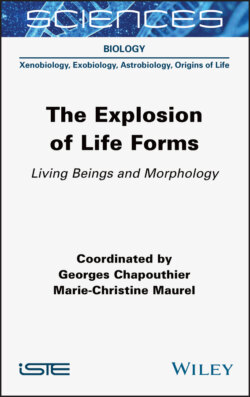Читать книгу The Explosion of Life Forms - Группа авторов - Страница 16
1.6. Rebuilding a living cell: a wide range of possibilities explored, from the mineral to the organic
ОглавлениеToday, we speak of “chemical gardens” and “metallic vegetation” to refer to self-organized chemical figures that evoke plant diversity. When a metal salt is brought into contact with a basic aqueous solution of silicate, carbonate or phosphate, patterns called “flowers” are produced in the laboratory (Haudin et al. 2018). Technological innovations are suggested by these natural mineral productions which flourish today in the field of biomimicry. They find multiple biophysical, robotic, electronic, automatic, aeronautical, architectural, etc. applications, with the purpose of compensating for our weaknesses and repairing handicaps. Let us note here that mimicry is not the prerogative of modern technologies. A spider can be mistaken, even by the greatest arachnologist, for a fragment of a dead leaf.
The mechanobiology of biological membranes has become a growing field of research, particularly in the field of synthetic biology, towards artificial cells with genetic circuits and reaction cascades. Maximizing the modularity of their design and their flexibility is made possible by encapsulating them in liposomes, allowing chemical reactions to take place in well isolated environments. Such minimal synthetic cells, called “synells”, were designed by MIT researchers3 , who founded Synlife in 2017. They are governed by external signals and communication between liposomes, which can be fused in a controlled manner (Adamala et al. 2016).
Artificial life, in silico, a new paradigm between the machine and the living, serves as a model for the design of mineral “creatures”, organoids, automata (mechanical or bionic), micro-robots with metabolisms (Hamada et al. 2019), humanoids, etc., which would “emerge” from nanotechnology. The pairing of the brain and machine aims at the illusory perfection of the human species aspiring, as described by Aldous Huxley in 1932 in Brave New World, to impose its path to evolution.
